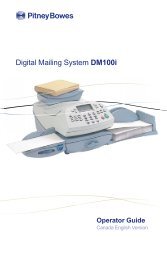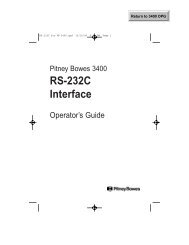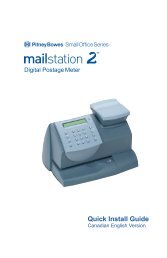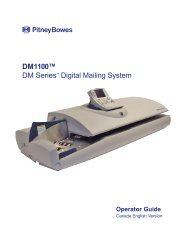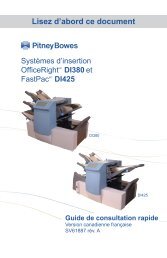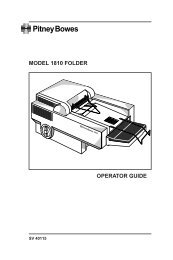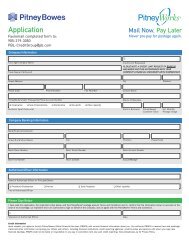Create successful ePaper yourself
Turn your PDF publications into a flip-book with our unique Google optimized e-Paper software.
If you are having difficulty with your machine<br />
If you think there is a problem with the way your faxes look, make a<br />
copy first. If the copy looks good, the problem is probably not your<br />
machine. Check the chart below and follow the troubleshooting tips.<br />
DIFFICULTY SUGGESTIONS<br />
Printing or Receiving Faxes<br />
Condensed print and<br />
If your copy looks good, you probably had a bad connection, with static<br />
horizontal streaks or the top or interference on the telephone line. If the copy looks bad, clean the<br />
and bottom of sentences are scanner area. If there is still a problem, call Service/Support phone<br />
cut off.<br />
number.<br />
Vertical black lines when Sometimes you may see vertical streaks/black lines on the faxes you<br />
receiving.<br />
receive. Your machine’s primary corona wire for printing may be dirty,<br />
or the sending party’s fax scanner may be dirty. Clean your primary<br />
corona wire (see Cleaning the drum unit on page 12-24). Ask the sender<br />
to make a copy to see if the problem is with the sending machine. Try<br />
receiving from another fax machine. If the problem continues, call<br />
Service/Support phone number.<br />
Horizontal streaks; lines are You may get a fax with horizontal streaks or with missing lines. Usually<br />
missing.<br />
this is caused by a poor telephone connection. Ask the other party to<br />
send the fax again.<br />
Received faxes appear as split If the received data is divided and printed on two pages or if you get an<br />
or blank pages.<br />
additional blank page, make sure that auto reduction setting is turned<br />
On. (See Printing a reduced incoming fax (Auto Reduction) on page<br />
5-5.)<br />
Phone Line or Connections<br />
Dialing does not work Check for a dial tone. Change Tone/Pulse setting. (See Setting Tone<br />
and Pulse dialing mode on page 4-4.) Check all line cord connections<br />
and that the curled handset cord is not in the EXT jack. Check the power<br />
cord connection.<br />
The machine does not answer Make sure the machine is in the correct receiving mode for your setup.<br />
when called.<br />
(See Choosing the Receive Mode on page 5-1 and To select or change<br />
your Receive Mode on page 5-2.) Check for a dial tone. If possible, call<br />
your machine to hear it answer. If there is still no answer, check the<br />
telephone line cord connection. Connect a standard telephone handset<br />
to the machine’s telephone jack. If there is no ringing when you call your<br />
machine, ask your telephone company to check the line.<br />
No dial tone on the handset Press Hook/Hold—OR—Lift the handset. If you hear no dial tone,<br />
check telephone line cord connections at the machine and wall jack.<br />
Check that handset curled cord is connected to the machine’s handset<br />
jack. Test the wall jack with another single line telephone. If no dial tone<br />
on the wall outlet, call your Telephone Company.<br />
TROUBLESHOOTING AND ROUTINE MAINTENANCE 12 - 11






